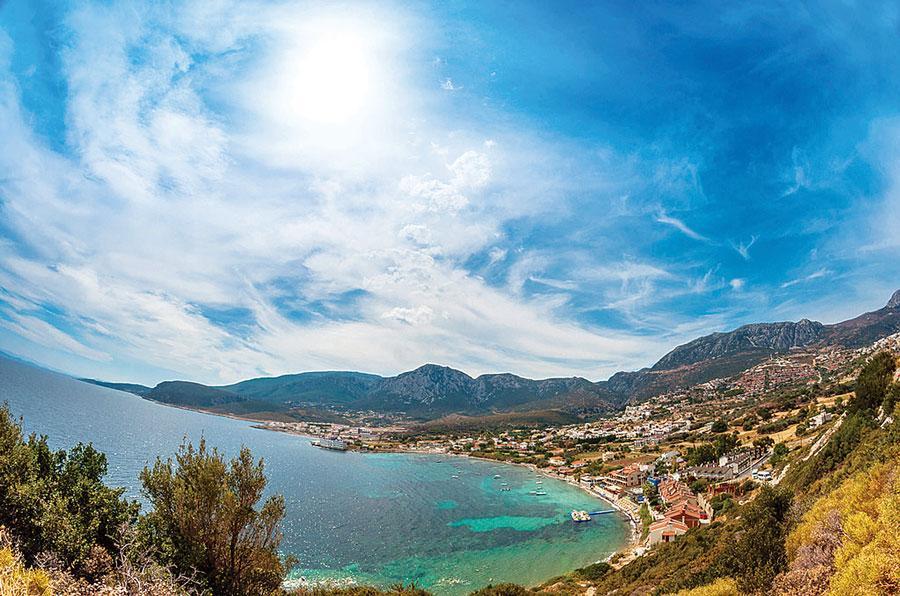
ÖZGEN ACAR
Sometime mid-February, there was a short article in a Turkish newspaper titled “The fresco of Narcissus, the symbol of arrogance.” The fresco was found in the ancient city of Pompei, which was lost under the lava of the Vesuvius volcano in Italy.
The article reported that the fresco was depicting Narcissus, who fell in love with his own image.
But before talking about Narcissus, let’s talk about the nature of Anatolia.
The narcissus flower, which is the harbinger of spring, is famous for its beauty and smell between the months of December and March. These days we are living the “season of the narcissus flower,” which is winter-hardy.
The homeland of narcissus is Mordoğan resort in Karaburun peninsula of the western province of İzmir. The residents of Karaburun also call December the “month of narcissus.”

Now let’s go back to the fresco found in Italy.
The most beautiful “mythological” story of Mordoğan is the one about Narcissus. According to this, the river fairy Nana used to lay down under the shadow of trees in the garden of Flora, which is the “God of flower” in the region, home to 78 species of purple flowers. I wonder if Mordoğan took its name from these 78 species of purple flower.
Nana prayed for her son to be very handsome. She eventually gave birth to the world’s most handsome child. She named him Narcissus, who grew up to be a very handsome boy. But he, too, also liked himself a lot and was not interested in girls, because he was arrogant.
According to myths, a very beautiful forest fairy, named “Echo,” was also living in the region.
When the jealous goddess Hera learned that her womanizer husband Zeus cheated on her with a forest fairy, she was very angry. Hera vengefully went to the forest where the fairies lived.
The fairies escaped because they feared Hera’s curse. But Echo did not escape. When she saw the beautiful fairy, Hera cursed the innocent Echo, saying “From now on, whoever speaks, you will repeat those words.”
One day, while walking around the forest, Echo saw the handsome Narcissus and fell in love with him. She wanted to talk to him but could not because of Hera’s curse.
Narcissus shouted: “Who is there?” Echo, who was cursed to repeat the words, said: “There, there,” scaring Narcissus.
Later on, before hiding in a cave in the mountains, Echo was vindictive. “Just like me, I hope he falls in love with someone but cannot reunite with her,” Echo said.
When walking at the foot of the Mimas mountains (Karaburun’s Mordoğan mountains), Narcissus went to drink water in a spring head. As he was cursed, he fell in love with his own face that he saw in the reflection. “I am in love with myself. I am very lonely. Only death can save me,” he said.
And finally, he died of despair while he was looking at himself in the spring head.
When Echo came to the spring head, she saw that Narcissus died and there she found very beautiful flowers. She cried for her love and returned to her cave.
The flowers Echo found were narcissuses. Since then, the narcissus flower has been known as the symbol of arrogance. Are there any other flowers that blossom in the winter?
Narcissus’ self-obsession, who lived at the foot of Mordoğan, is called narcissism in psychology.
The Roman poet Ovidius (43-17 B.C.) wrote poetries generally on love, mythology and desolated women. This myth is mentioned in his book “Metamorphoses.” It was also mentioned in Oscar Wilde’s “The Picture of Dorian Gray” and Stendhal’s “The Red and the Black.”
Turkish poets Can Yücel and Melih Cevdet Anday wrote a poem on this story.
This myth also became the subject for many European painters. Salvador Dali made a painting of this too. (Photo 8)
The marble sculptures of Narcissus and Echo were also made throughout the centuries.
There is a sculpture titled “The Lady of the Lake” in a Los Angeles Park, named Echo.
But I want to draw attention to why this story is not being survived in Karaburun, where it was born. Why are the Culture and Tourism Ministry, the İzmir Governor’s Office and Karaburun Municipality not interested in this magnificent historical myth?